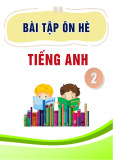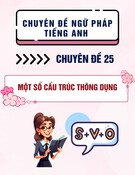
TNU Journal of Science and Technology
229(12): 327 - 335
http://jst.tnu.edu.vn 327 Email: jst@tnu.edu.vn
EFL STUDENT-TEACHERS’ IMAGINED IDENTITY AND INVESTMENT
IN TEACHING COMPETENCY DEVELOPMENT
Nguyen Huynh Truc An*, Tran Quoc Thao
HUTECH University
ARTICLE INFO
ABSTRACT
Received:
29/7/2024
Discovering an imagined identity and investment in teaching
competency development of English as a Foreign Language student-
teachers has gradually become one of the most significant issues in
English language teaching field. The study aims to unravel imagined
identity and the extent of investment in developing teaching
competency of English as a Foreign Language student-teachers at a
university in Ho Chi Minh City, Vietnam. Questionnaires were utilized
to collect data from 96 English as a Foreign Language student-teachers.
The findings revealed that to construct an imagined identity, they
should improve English language proficiency, practice English
language teaching reflections, develop teacher professional identity,
accumulate English language teaching experiences, and acquire
specialized knowledge and discourse in English language teaching. In
addition, the findings also indicated that the four components, namely
skills, knowledge, attitudes of English language teaching, and English
language skills should all be invested in developing the teaching
competency of English as a Foreign Language student-teachers.
Revised:
26/9/2024
Published:
26/9/2024
KEYWORDS
EFL student-teacher
Imagined identity
Investment
Teaching competency
English language teaching
BẢN NGÃ TƯỞNG TƯỢNG VÀ SỰ ĐẦU TƯ VÀO VIỆC PHÁT TRIỂN
NĂNG LỰC GIẢNG DẠY TIẾNG ANH CỦA GIÁO SINH
Nguyễn Huỳnh Trúc An*, Trần Quốc Thao
Trường Đại học Công nghệ Tp. Hồ Chí Minh
THÔNG TIN BÀI BÁO
TÓM TẮT
Ngày nhận bài:
29/7/2024
Khám phá bản ngã tưởng tượng và sự đầu tư vào việc phát triển năng
lực giảng dạy của giáo sinh đã dần trở thành một trong những vấn đề
quan trọng nhất trong lĩnh vực giảng dạy tiếng Anh. Nghiên cứu này
nhằm mục đích làm sáng tỏ bản ngã tưởng tượng và mức độ đầu tư
vào việc phát triển năng lực giảng dạy tiếng Anh của giáo sinh tại một
trường Đại học ở Thành phố Hồ Chí Minh, Việt Nam. Bảng câu hỏi
đã được sử dụng để thu thập dữ liệu từ 96 giáo sinh. Kết quả đã tiết lộ
rằng để xây dựng bản ngã tưởng tượng, họ nên cải thiện trình độ tiếng
Anh, luyện tập chiêm nghiệm trong giảng dạy tiếng Anh, phát triển
bản sắc nghề nghiệp của giáo viên, tích lũy các kinh nghiệm trong
giảng dạy tiếng Anh, tiếp thu kiến thức chuyên ngành và diễn ngôn
trong giảng dạy tiếng Anh. Ngoài ra, kết quả nghiên cứu cũng đã chỉ
ra rằng bốn thành phần bao gồm kỹ năng, kiến thức, thái độ giảng dạy
tiếng Anh và kỹ năng tiếng Anh đều nên được đầu tư vào việc phát
triển năng lực giảng dạy tiếng Anh của giáo sinh.
Ngày hoàn thiện:
26/9/2024
Ngày đăng:
26/9/2024
TỪ KHÓA
Giáo sinh
Bản ngã tưởng tượng
Đầu tư
Năng lực giảng dạy
Giảng dạy tiếng Anh
DOI: https://doi.org/10.34238/tnu-jst.10830
* Corresponding author. Email: nhtan2409@gmail.com

TNU Journal of Science and Technology
229(12): 327 - 335
http://jst.tnu.edu.vn 328 Email: jst@tnu.edu.vn
1. Introduction
In the English as a Foreign Language (EFL) context, it is significant to examine the roles of
student-teachers’ imagined identity and their investment in teaching competency (TC) development.
According to [1], imagined identity refers to an identity developed within oneself when envisioning
relationships between individuals and other people, as well as communities beyond their common
interactions. Moreover, imagined identity facilitates learners’ realizations of who they might be and
which communities they belong to [2]. Interestingly, Goktepe and Kunt [3] recognized that when
student-teachers were confronted with a real-world classroom, their imagined identity could be
shifted. It is because the transformation from being a student to becoming a teacher is a daily process
full of changes, adaptations, and, on occasion, unforeseen experiences [4]. In terms of investment, it
encompasses goals, commitment, practical aspects, and multiple identities that contribute to the
success of the language learning process [5]. In addition, Darvin and Norton [6] claimed that
investment is beneficial for developing language education policy by demonstrating how classroom
activities reflect a more extensive relationship of power. They [6] also stated that investment is
established based on the intersection of three elements, including identity, capital, and ideology. As
an integral part of the English language teaching (ELT) methodology training program, TC is highly
emphasized in the EFL context [7]. As [8] defined, TC refers to knowledge, attitudes, and teaching
skills that teachers use to engage students in learning. In the same vein, it plays a significant role in
structuring English language teachers’ capacity and ensuring the success of teaching tasks [9].
Several prior studies have been conducted on imagined identity, investment, and the TC of
EFL student-teachers. In terms of EFL student-teachers’ imagined identity and investment, Teng
[10] demonstrated learners’ identity flux inside and across distinct communities. They also
pinpointed that learners’ identity affected their investment in English learning and vice versa. In
addition, Nguyen Xuan Nghia [11] showed that his imagined identity had an impact on how his
educational and professional identities were constructed and that he made significant investments
in language acquisition. With respect to the TC, Ghufron et al. [12] mentioned several
components, such as personal desires, teaching pedagogical knowledge, and ELT skills, to
evaluate the competency of pre-service English language teachers. Moreover, scholars [13], [14]
discovered that knowledge, skills, and attitudes related to the ELT field were identified as the
main components that played significant parts in the growth of their TC. It can be seen that most
previous studies focused on the interaction of imagined identity and investment, as well as TC’s
notions and components. Nevertheless, there has been relatively little study focused on the
construction of imagined identity and the extent of investment in developing TC of EFL student-
teachers. Therefore, this paper aims to investigate EFL student-teachers’ imagined identity and
investment in developing TC in the context of the university in Ho Chi Minh City, Vietnam. The
study attempts to answer the following questions:
1. What is university EFL student-teachers’ imagined identity?
2. To what extent do university EFL student-teachers invest in their teaching competency
development?
2. Research methodology
2.1. Research context and participant
The research was carried out at a university in Ho Chi Minh City, Vietnam. The ELT major
program at this university focused on four main subjects: Theories of TESOL (3 credits), Techniques
for TESOL (3 credits), English Teaching Practice (3 credits), and Teaching English to Young
Learners (3 credits). The research participants were 96 EFL student-teachers. A majority of them had
teaching experience (82.3%); only 17.7% of the remaining students had no experience. Additionally,
three main categories were used to clarify the number of teaching years, including under 1 year
(64.6%), 1 - 2 years (22.9%), and over 2 years (12.5%). Furthermore, the participants tended to be in

TNU Journal of Science and Technology
229(12): 327 - 335
http://jst.tnu.edu.vn 329 Email: jst@tnu.edu.vn
charge of teaching assistants (44.8%), followed by tutors (25.0%), part-time teachers (24%), and
full-time teachers (6.3%). Regarding reasons why they became EFL teachers, the highest reason was
passion (45.8%), while family’s career orientation and other reasons were 27.1% in each category.
2.2. Research instrument
The closed-ended questionnaires were used to collect data. The questionnaire was separated
into three parts: part I focused on participants’ personal information; part II regarding imagined
identity adapted from the studies of [15], [16], and part III related to investment in TC
development was redesigned based on the study of [17]. Especially, the five-point Likert scale
was applied to measure the mean (M) and standard deviation (SD). In terms of EFL student-
teachers’ imagined identity includes five sub-variables: Improve English language proficiency (5
items), Acquire ELT specialized knowledge and discourse (5 items), Practice ELT reflections (5
items), Accumulate ELT experiences (5 items), and Develop teacher professional identity (5
items). For investment in TC development, there were four sub-variables: English language skills
(4 items), ELT attitudes (5 items), ELT knowledge (7 items), and ELT skills (9 items). A
Cronbach’s alpha proved the reliability of the questionnaire was comparatively high (α = .94).
2.3. Procedures for data collection and analysis
For the data collection, all items were translated into Vietnamese before being delivered to
participants. Participants were explained the main keywords before taking the questionnaires.
The questionnaires could be completed in 15-20 minutes. Regarding the data analysis procedures,
SPSS software version 27.0. was applied to analyze a descriptive statistic. The interval M scores
of imagined identity questionnaire were interpreted as 1-1.80: strongly disagree; 1.81-2.60:
disagree; 2.61-3.40: neutral; 3.41-4.20: agree; 4.21-5.00: strongly agree. Similarly, the interval M
scores of investment in TC development questionnaire were interpreted as 1-1.80: very low;
1.81-2.60: low; 2.61-3.40: average; 3.41-4.20: high; 4.21-5.00: very high.
3. Results and Discussion
3.1. Results
3.1.1. EFL student-teachers’ imagined identity
EFL student-teachers’ imagined identity in terms of improving English language skills
As seen in Table 1, a majority of EFL student-teachers strongly agreed that improving English
language proficiency motivated ELT (Item 4: M=4.54; SD=.59). Besides, EFL student-teachers
also thought that they could find a well-paid teaching job (Item 2: M=4.53; SD=.63) and express
ideas/opinions confidently in ELT classes (Item 5: M=4.51; SD=.56). Also, participants admitted
that they could imagine themselves as proficient English language users whenever they think of
their future careers (Item 1: M=4.34; SD=.73). Moreover, the participants believed that EFL
teachers must serve as role models for their students, so having a native accent item also received
a high degree of agreement (Item 3: M=4.29; SD=.76). It could be understood that EFL student-
teachers had a strong desire to improve their English language proficiency.
Table 1. Improving English language skills
Items
N= 96
M
SD
1. Whenever I think of my future career, I can imagine myself as a proficient English language user.
4.34
.73
2. I wish I could have a well-paid teaching job, thanks to my high proficiency level in English.
4.53
.63
3. I wish I could have a native-like accent because I perceive that English language teachers
must be role models for their students in accent/pronunciation.
4.29
.76
4. I will feel more motivated to teach English language when I improve my English language proficiency.
4.54
.59
5. Being proficient in English enables me to express my ideas/opinions confidently during my
ELT classes.
4.51
.56

TNU Journal of Science and Technology
229(12): 327 - 335
http://jst.tnu.edu.vn 330 Email: jst@tnu.edu.vn
EFL student-teachers’ imagined identity in terms of acquiring specialized knowledge and
discourse of ELT
All five items relating to acquiring specialized knowledge and discourse of ELT in Table 2
had M ranging from 3.98 to 4.56. It indicated that participants had a high degree of agreement
with this sub-variable. In particular, EFL student-teachers want to apply the ELT specialized
knowledge to teach their future students effectively (Item 10: M=4.56; SD=.55). In addition,
those with specialized knowledge not only connect with social platforms suitable for their level
of education (Item 6: M=4.21; SD=.76), but it also helps them recognize meaningful personal
changes after learning ELT (Item 8: M=4.21; SD=.73). The participants also showed their desire
to join in pedagogical issues’ workshops/conferences (Item 7: M=4.17; SD=.69). Interestingly,
they expected to own an extensive collection of supplementary teaching materials aside from
course books (Item 9: M=3.98; SD=.87).
Table 2. Acquiring specialized knowledge and discourse of ELT
Items
N= 96
M
SD
6. By acquiring specialized knowledge in ELT, I will be able to access social networks that
are appropriate for my educational level.
4.21
.76
7. To keep up with innovations in teaching English language, I would like to participate in
workshops/conferences on pedagogical issues.
4.17
.69
8. For me, it is meaningful to talk about personal changes after learning ELT.
4.21
.73
9. I can imagine myself as an English language teacher who owns an extensive collection of
supplementary teaching materials aside from course books.
3.98
.87
10. I wish I could use ELT specialized knowledge effectively to teach my students in the future.
4.56
.55
EFL student-teachers’ imagined identity in terms of practicing ELT reflections
The results in Table 3 showed that most EFL student-teachers expected to apply ELT
reflections to assess their future lessons (Item 14: M=4.35; SD=.66) and their teaching
competency would develop by practicing ELT reflections (Item 15: M=4.28; SD=.76). The
participants also demonstrated a high interest in the changing of personality, thoughts, and so on,
after practicing in ELT reflections (Item 12: M=4.35; SD=.61). Furthermore, they have shown
that the model of their ideal teachers which encourages them to participate in ELT reflections and
helps them to develop a secure and solid knowledge base (Item 13: M=4.29; SD=.66 & Item 11:
M=4.33; SD=.67).
Table 3. Practicing ELT reflections
Items
N= 96
M
SD
11. Practicing ELT reflections helps me to develop a secure and solid knowledge base.
4.33
.67
12. I perceive that by practicing more in ELT reflections, I may change as a person (e.g., in
personality, and thoughts).
4.35
.61
13. The model of my ideal teacher encourages me to participate in ELT reflections and do my
best in ELT learning.
4.29
.66
14. I wish I could apply ELT reflections to assess my lessons in the future.
4.35
.66
15. I perceive that by practicing ELT reflections, my teaching competency will develop.
4.28
.76
EFL student-teachers’ imagined identity in terms of accumulating ELT experiences
As presented in Table 4, a large number of participants hoped to improve their TC through
accumulating ELT experiences (Item 17: M=4.53; SD =.58), which enabled them to become
highly educated English language teachers (Item 20: M=4.33; SD=.66). In addition, they agreed
that accumulating ELT experiences made them feel comfortable doing ELT demonstrations (Item
16: M=3.81; SD=.96). As for future teaching tasks, EFL student-teachers expected to be able to
handle more challenging ELT tasks and adopt various strategies to facilitate students’ learning
processes (Item 18: M=4.42; SD=.62 & Item 19: M=4.13; SD=.86).

TNU Journal of Science and Technology
229(12): 327 - 335
http://jst.tnu.edu.vn 331 Email: jst@tnu.edu.vn
Table 4. Accumulating ELT experiences
Items
N= 96
M
SD
16. Currently, I feel comfortable doing ELT demonstrations in front of my teachers and classmates.
3.81
.96
17. I am eager to accumulate ELT experiences so that I can improve my teaching competency.
4.53
.58
18. I perceive that if I try to accumulate ELT experiences, I will be capable to handle more
challenging teaching tasks that are beyond my current capability.
4.42
.62
19. I can imagine myself as a creative English language teacher who can adopt various
strategies to facilitate students’ learning process.
4.13
.86
20. I perceive that accumulating ELT experiences can help me join the ranks of well-educated,
professionally trained English language teachers.
4.33
.66
EFL student-teachers’ imagined identity in terms of developing teacher professional identity
Table 5 shows the results of EFL student-teachers’ desire to develop teacher professional
identity. Most participants strongly believed in becoming English language teachers who create
various learning opportunities in their classes (Item 24: M=4.46; SD=.59). Moreover, participants’
answers highlighted that they would create relevant lesson plans and use ELT methodologies
effectively in teaching their students thanks to developing teacher professional identity (Item 23:
M= 4.38; SD=.68 & Item 25: M=4.38; SD=.66). Interestingly, studying to become English
language teachers enabled them to create new thoughts (Item 21: M=4.31; SD=.68). Also, they
expected to be English language teachers in a real context (Item 22: M=4.09; SD=.85).
Table 5. Developing teacher professional identity
Items
N= 96
M
SD
21. Studying to become an English language teacher enables me to create new thoughts.
4.31
.68
22. I can imagine myself being an English language teacher in a real context.
4.09
.85
23. If I have a teacher professional identity, I will create relevant lesson plans for my students’
learning styles.
4.38
.68
24. I wish I could become an English language teacher who creates various learning
opportunities in my classes.
4.46
.59
25. I can imagine myself using ELT methodologies effectively to teach my students.
4.38
.66
3.1.2. EFL student-teachers’ investment in TC development
EFL student-teachers’ investment in TC development in terms of investment in English
language skills
In terms of investment in English language skills, the data in Table 6 indicated which skills they
intended to invest in. The participants developed speaking skills (Item 3: M=3.95; SD=.91) and
listening skills (Item 1: M=3.82; SD=.76) regularly. Nevertheless, they showed less investment in
developing reading skills (Item 2: M=3.55; SD=.73) and writing skills (Item 4: M=3.40; SD=.92).
The total mean scores for developing four skills were from 3.40 to 3.95, which meant that
participants were aware of the significance of mastering good English language skills in ELT.
Table 6. English language skills
I invest in my English language skills by …
N= 96
M
SD
1. developing my listening skills regularly.
4.31
.68
2. developing my reading skills regularly.
4.09
.85
3. developing my speaking skills regularly.
4.38
.68
4. developing my writing skills regularly.
4.38
.66
EFL student-teachers’ investment in TC development in terms of investment in ELT attitudes
The results in Table 7 revealed that looking for ELT information (Item 5: M=3.76; SD=.80)
and reading interesting facts about ETL jobs (Item 6: M=3.83; SD=.86) were crucial in investing

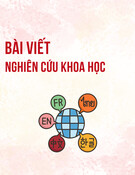
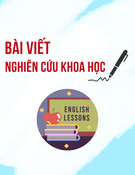

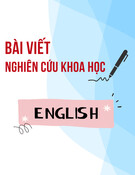
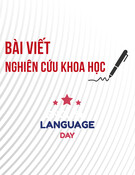
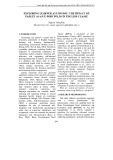
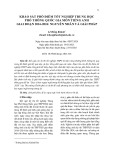
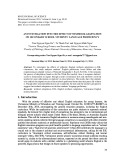
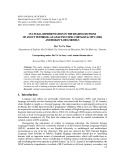
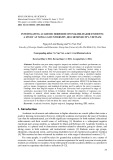
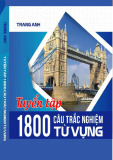
![Tài liệu Từ vựng tiếng Anh Trung cấp [mới nhất]](https://cdn.tailieu.vn/images/document/thumbnail/2025/20250913/nguyentuan250421@gmail.com/135x160/99491757910839.jpg)
![Tài liệu Từ vựng Tiếng Anh theo chủ đề [mới nhất]](https://cdn.tailieu.vn/images/document/thumbnail/2025/20250913/namdhuet@gmail.com/135x160/83251757753810.jpg)


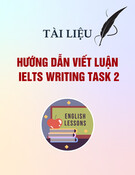
![Tài liệu Từ vựng tiếng Anh cho bé [chuẩn nhất/mới nhất]](https://cdn.tailieu.vn/images/document/thumbnail/2025/20250731/huadaithesang2509@gmail.com/135x160/18631754013896.jpg)





